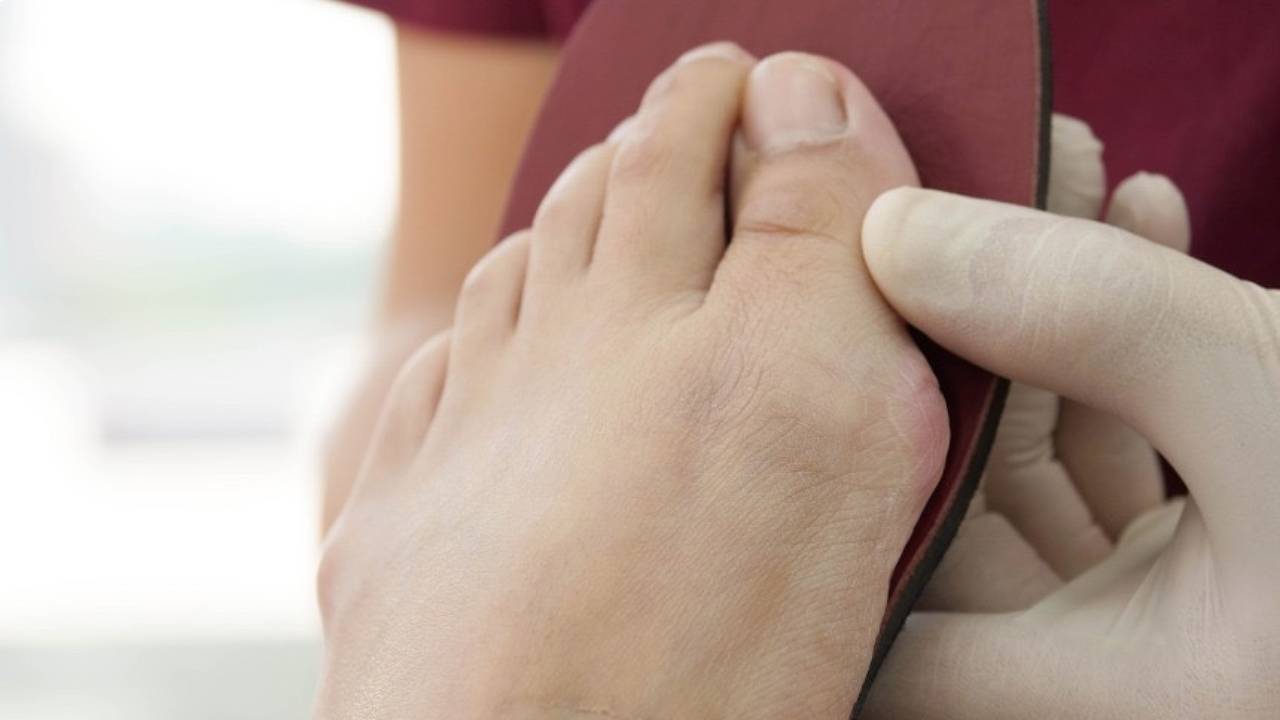Non-Invasive Bunion Management in Singapore
In Singapore, bunions, also known as “hallux valgus”, are a common deformity characterised by a bulge or swelling near the base of the big toe. Although it may seem as if an extra bone has grown on the side of the foot, the protruding bump is actually caused by the big toe deviating from its normal position towards the direction of the second toe. These deformities start off subtle, but can eventually become painful and unsightly. If neglected, the condition can worsen, causing the toes to overlap. It can result in constant pain in the joint which will not only restrict shoe choice but also severely limit daily activities of the individual. The level of pain and visual deformity can be so extreme that sufferers may wonder if there is a cure for bunions.
What causes bunions in Singapore?
Wearing heels are not the primary cause of bunion development; if that were the case, then every woman who has ever worn heels would have painful, unsightly forefoot protrusions. Bunions are actually caused by a variety of factors which include:
- Genetic Heredity
- Trauma
- Arthritis
- Unsuitable Footwear
The main cause of bunions in Singapore is genetics. It is not uncommon for our podiatrists to see bunions across multiple generations of a patient’s family. When children develop bunions at a young age, this is known a juvenile bunions.

What are the symptoms?
Patients with this condition will usually experience
- Pain in and around the big toe
- Corns at the peak of pressure
- Redness and swelling at the joint contracture
- Restricted movement
However, some patients feel little to no pain, with the only sign being visible bumps on the edge of the feet. Even though there might not be any immediate pain, worsening bunions will lead to secondary problems in other parts of the foot and leg.
What can a podiatrist do for patients with Bunions?
As experts in the anatomy of the lower extremities, podiatrists offer non-surgical options that are personalised for your needs. These modalities can include:
- A thorough assessment of joint functions
- Recommending ergonomic shoes
- Customise orthotic insoles to help realign the joint and control foot function, reducing long-term damage and pain
- Medical technologies, such as ESWT uses sound waves to break up calcium deposits and stretch the ligaments and tendons

Bunions can be managed non-surgically in Singapore by a podiatrist. This involves using extracorporeal shock wave therapy (ESWT), a non-invasive procedure, in conjunction with custom-made orthotic insoles to realign the joint. Unlike traditional surgery, this method addresses the underlying biomechanical issues that cause bunions and can help to prevent them from recurring. Orthotic insoles are often necessary to keep the foot in an optimal position, which facilitates recovery and prevents recurrence.
Frequently Asked Questions
This bony growth at the base of your big toe is known as a bunion. Bunions occur when the bones in that area shift out of place. When this happens, your big toe is pushed towards the other toes while the joint at the base shifts outwards instead.
While many people in Singapore believe that bunions are caused by wearing shoes, such as high heels, current research leans towards the genetics as being the largest risk factor for developing bunions. Those with certain foot types or conditions, along with those in occupations that require long periods of standing or walking, are at greater risks of developing bunions.
One of the common questions we get in clinic is if the bunion will go away on its own. Bunions do not disappear or revert to their original shape without outside intervention, and are likely to worsen over time.
As bunions do not go away on their own, neglecting a bunion allows it to worsen. Left unresolved, a bunion can often develop to the point where the big toe totally overlaps the second toe. At this point, surgery is the only possible option. Early intervention is critical to avoid such developments.
Conservative bunion care focuses on two aspects, prevention and maintenance. As bunions are likely to worsen over time, the goal is to maintain the situation and prevent it from worsening. If the bunion is extremely severe, you may be advised to undergo surgery instead.
As the deformity can be highly intrusive or obvious, some patients may choose to have them removed for aesthetic purposes. The typical recommendation is that surgery should not be the first option unless the patient is experiencing severe pain or if the deformity continues to progress despite conservative care.
If you frequently wear tight-fitting or poor-fitting footwear, changing your shoes could potentially help prevent the development of a bunion. However, if the bunion has already started to occur, it is more likely to slowly worsen over time despite changing to appropriate footwear.




